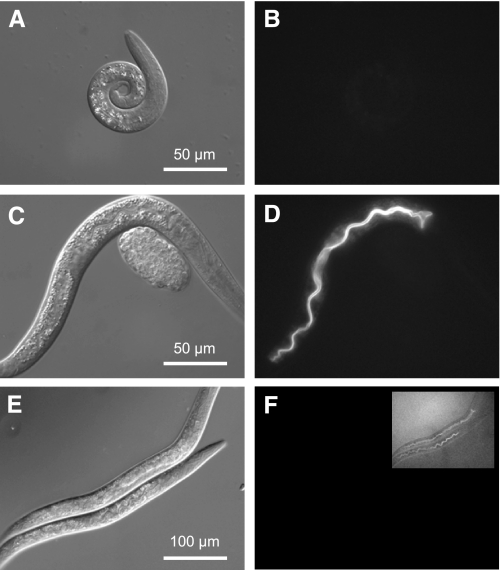Fig. 2.
Analysis of vha-6 mutant and RNA interference (RNAi) phenotypes. A, C, and E are DIC contrast images; B, D, and F are fluorescent images. Homozygous vha-6(ok1825) deletion mutants (courtesy of the C. elegans Gene Knockout Consortium) arrested development as L1 larva, but an extrachromosomal array coding for a Pvha-6::VHA-6::mCherry translational fusion could complement the mutation and restore normal growth. To illustrate this, we examined brethren from the rescued line where mosaic loss of the rescue construct at 15°C resulted in worms that lacked fluorescence and arrested development as L1 larvae (A and B; 48-h posthatch L1 arrest), whereas the presence of the construct in age-matched transgenic siblings restored normal development (C and D; 48-h posthatch L2/L3). Single-generation treatment of wild-type worms with vha-6 RNAi for 3 days, starting as a recently hatched L1 larva, reduced VHA-6::mCherry expression to nearly undetectable levels (F; inset is 10-fold longer exposure). RNAi-treated worms exhibited a progressive slowing of growth, such that they had generally reached the L3/L4 stage by 72 h and often never reached reproductive maturity (E). These phenotypes are consistent with a requirement for VHA-6 activity for growth and maturation.

